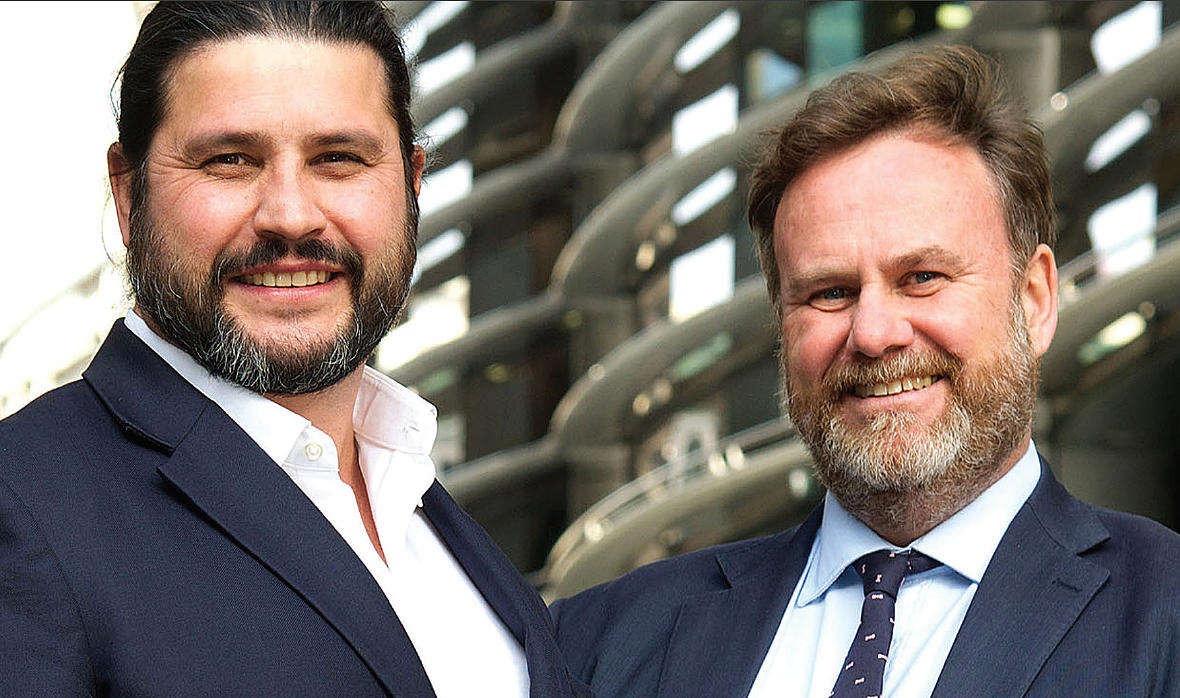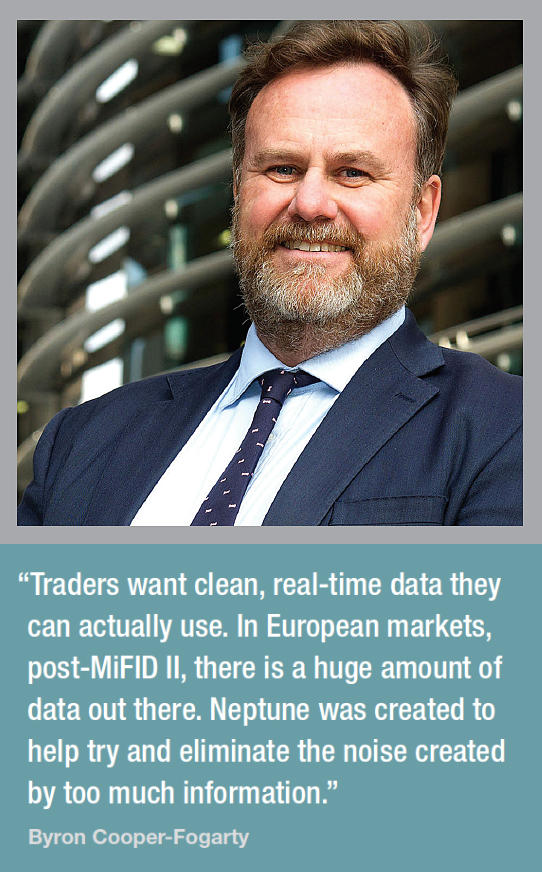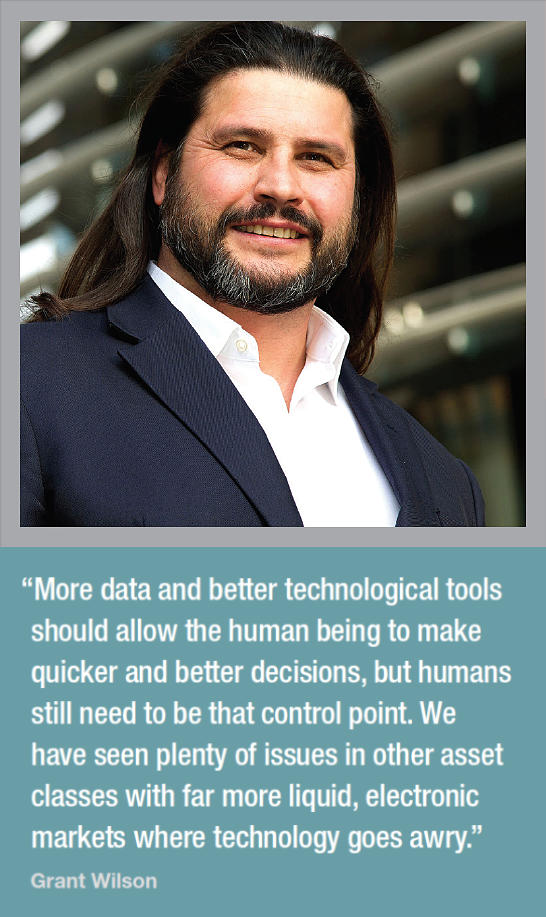Neptune’s new approach to supporting execution
 Since launching in 2016 Neptune has grown significantly, enabling dealer to client exchange of axes between bond traders, and in 2019 it is evolving further into elements of bilateral messaging to help digitise the trading process. Grant Wilson (left), CEO and Byron Cooper-Fogarty (right), head of sales at Neptune spoke to The DESK.
Since launching in 2016 Neptune has grown significantly, enabling dealer to client exchange of axes between bond traders, and in 2019 it is evolving further into elements of bilateral messaging to help digitise the trading process. Grant Wilson (left), CEO and Byron Cooper-Fogarty (right), head of sales at Neptune spoke to The DESK.
How are data demands changing in 2019?
Byron Cooper-Fogarty: Traders want clean, real-time data they can actually use. In European markets, post-MiFID II, there is a huge amount of data out there. Neptune was created to help try and eliminate the noise created by too much information, thereby allowing the buy side to access and view the data, and to integrate it in ways they have not been able to before.
We now carry in the vicinity of US$210 billion dollars’ worth of gross notional liquidity on a daily basis, as fresh positions, with everything reset to zero at the end of every day. At the start of 2017 we had less than 20,000 axes now it’s close to 60,000 across 30,000 different bonds. It’s a huge amount of information, all directly plumbed in from the 28 dealers that are involved in Neptune. Corporate bonds are still the core asset class for the Neptune platform, but now we cover emerging markets, particularly in hard currency, rates and we recently had our first mortgage backed security (MBS) and muni data added in Q4 last year.
Grant Wilson: Data coming through Neptune is being pushed up the value chain and it’s becoming more essential to decision-making processes. Neptune is trying to give that view of what can actually be executed in the street, versus two-way streamed prices, with someone making a market on 9,000 bonds, and not seeing the flow. The focus is on targeted, actionable data, and getting that type of data to buy-side clients in a quick and efficient way.
What do you see driving engagement with clients this year?
Grant Wilson: One part is the efficiency, and increased value proposition. The second part is connectivity. Across the street we see successes and failures, in platforms and firms in this space, due to a lack of connectivity. We had a very broad number of dealers behind us from our launch in July 2016 to today, so connectivity on the sell side is one of our strengths.
 Byron Cooper-Fogarty: By mid-2019 we should be connected to eight O/EMS providers. We have proprietary connectivity to 18 buy-side clients. Making that decision to put scarce IT resources towards a proprietary connection is not one made lightly, but with the data from almost 30 dealers aggregated into that connection it creates a huge draw. The utility model of Neptune makes it cost-efficient for firms to do that.
Byron Cooper-Fogarty: By mid-2019 we should be connected to eight O/EMS providers. We have proprietary connectivity to 18 buy-side clients. Making that decision to put scarce IT resources towards a proprietary connection is not one made lightly, but with the data from almost 30 dealers aggregated into that connection it creates a huge draw. The utility model of Neptune makes it cost-efficient for firms to do that.
The cost of doing that independently is high. A utility like Neptune sits in the middle and allows effective connectivity to sell-side firms directly, limited to almost zero cost on technology and infrastructure.
Streaming data is enabling greater automation of the trade lifecycle; how are you engaging in that change?
Grant Wilson: Neptune is additive to the changes taking place, but drivers such as structural market changes, for example MiFID II, along with cost pressures on both buy side and sell side are needed to make people do things differently. Capital and human resource pressures are pushing for greater automation and simplification. Neptune is playing its part in the changing environment that the buy side and the sell side are dealing with, and allowing them more flexibility in how they interact. As a real time source of higher quality data, between the buy side and the sell side, it allows quantitative pre trade analysis on the buy side. It’s a larger, more robust data source available to the buy side real time in order to do their analysis.
How do you expect trading technology on the buy-side desk to evolve over the next 24 months?
Byron Cooper-Fogarty: Twenty-four months seems like a long amount of time, but experience tells us that it isn’t. Increasingly systems like ALFA, FlexTrade and others that we have partnered with, will start to get more traction. A lot of the feedback we get from the buy side, is that order/execution management systems are not quite doing what traders need just yet. As a result, a lot of the bigger asset managers are looking to build their own tools. Despite the reasonable constraint in time there is a need for bigger, better resourced firms to build their own tools around understanding how they can analyse their trading performance and work out from a portfolio management perspective what they can and can’t get done.
 Grant Wilson: More data and better technological tools should allow the human being to make quicker and better decisions, but humans still need to be that control point. We have seen plenty of issues in other asset classes with far more liquid, electronic markets where technology goes awry. I don’t think the fixed income market is there yet and nor do I think that’s the holy grail of the fixed income market.
Grant Wilson: More data and better technological tools should allow the human being to make quicker and better decisions, but humans still need to be that control point. We have seen plenty of issues in other asset classes with far more liquid, electronic markets where technology goes awry. I don’t think the fixed income market is there yet and nor do I think that’s the holy grail of the fixed income market.
What will we see from Neptune in 2019?
Grant Wilson: We are focussed on two things, around efficiency discussion and trade workflow. Neptune is going to roll out the ability for the buy side and the sell side to interact and engage in trading across our infrastructure. We are partnered with a messaging/chat system, and we already offer a chat function which mirrors the current market structure now, particularly in credit. We are also digitising that flow across our infrastructure, but without sitting in the middle of any trades, or becoming any form of trading platform thus completing the circle from pre-trade data to a deal done between two participants over the infrastructure.
This is digitising the phone line to allow ease and efficiency of buy-side and sell-side engagement, allowing them the ability to access more data and different data types of services in Neptune.
Byron Cooper-Fogarty: This will focus more on the larger tickets, but allow both sides of the market to digitise what they do today.
What is your timeframe?
Grant Wilson: The technology has already been built, and we are working with banks to code up to it. We are working through the final steps, but we expect to have all that clear and done by the end of Q1 2019.
How else will you be supporting traders?
Grant Wilson: In conjunction with the sell side on the platform we are looking at creating a very low cost composite price, that will be available through one of our data partners. Composites are expensive pieces of data and our participants have asked us to see what we can do to use the large volume of data that we have on the platform to create composites that are more akin to the way the market trades, and aligned with how traders view the world. It will more clearly reflect the nature of trading block trades, but at a reduced cost.
Biographies:
- Grant Wilson has 20 years’ experience in financial markets. Prior to Neptune, Grant worked at Goldman Sachs in Credit Trading and eTrading. He has extensive experience on the sell-side with Morgan Stanley and Deutsche Bank. Grant is also managing partner at ETrading Software.
- Byron Cooper-Fogarty has over 20 years’ experience in Fixed Income markets. Prior to Neptune, Byron worked in FI eTrading and data at Thomson Reuters and MTS. He has experience across both the sell-side (RBC and Commonwealth Bank) and buy-side (Gartmore) in sales and business development.
©The DESK 2019
©Markets Media Europe 2025












